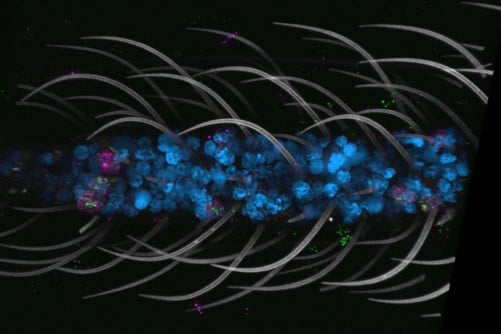An innovative bi-layer coating for cutting tools promises to transform manufacturing processes across various industries, including aerospace, automotive, and medical devices. Developed to enhance tool performance during high-speed machining, this advancement could significantly improve the efficiency and durability of tools used in challenging machining conditions.
Understanding the Significance of the Bi-Layer Coating
Traditionally, cutting tools have utilized a single-layer AlTiN (aluminum titanium nitride) coating to enhance wear resistance. This hard ceramic coating is typically applied as a thin film through a method known as physical vapor deposition (PVD). While effective, single-layer coatings often face challenges in balancing hardness, toughness, and frictional properties under demanding conditions. The new bi-layer coating addresses these limitations by optimizing the mechanical properties of each layer, allowing tools to endure extreme heat and mechanical loads.
The bi-layer coating consists of two distinct AlTiN layers, each with different ratios of aluminum and titanium. The top layer, designed with a higher ratio of aluminum, minimizes friction and enhances oxidation resistance. The sub-layer, with an equal ratio, contributes to increased hardness and superior adhesion to the tungsten carbide substrate commonly used in cutting tools. This unique combination enables tools to withstand higher temperatures and mechanical stresses, resulting in longer lifespan and improved machining efficiency.
Performance Improvements and Industry Impact
Testing conducted on tungsten carbide cutting tools with the bi-layer coating demonstrated impressive results. During ultra-high-speed turning of Stainless Steel 304 (SS304), a material widely utilized in the automotive and aerospace sectors, the bi-layer coating increased tool life by 33%. This significant enhancement in wear resistance is attributed to the effective reduction of two types of wear: crater wear, which occurs at the rake face due to heat, and flank wear, caused by mechanical stress.
The study highlighted the coating’s superior performance in managing friction, wear, and lubrication—key factors in the field of tribology. Observations revealed that the bi-layer tool produced chips with a smoother surface and more regular shape compared to those generated by single-layer tools. These results indicate better frictional conditions, allowing the cutting tool to operate more efficiently with reduced energy consumption.
The bi-layer coating’s ability to lower cutting forces further underscores its potential for energy savings in industrial settings. This efficiency could not only reduce operational costs but also promote more sustainable practices in high-speed machining environments.
The implications of this technology extend beyond improved tool life. For industries relying on high-speed, precision machining, such as automotive exhaust systems and medical instruments, the innovation could lead to considerable cost savings, minimized downtime, and enhanced productivity.
This research underscores the exciting prospects of advanced coatings in manufacturing technologies. As industries continue to demand materials that offer precision, durability, and efficiency, innovations like the bi-layer AlTiN coating demonstrate the critical role that materials science and mechanical engineering will play in driving future advancements across various sectors.







